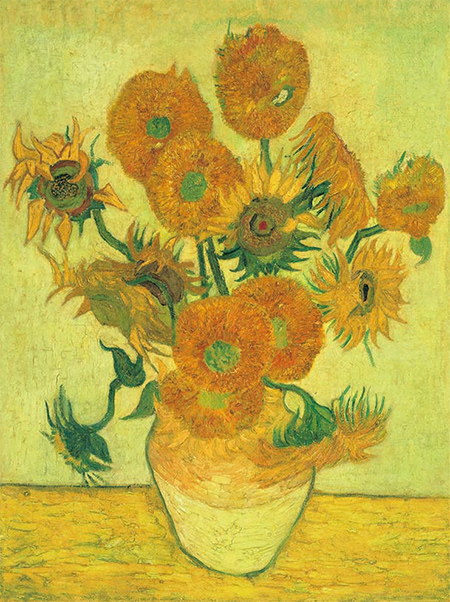Life Tips & Miscellaneous Travel and History Zen Philosophy and History Art and Sport Navigation of this blog
How Van Gogh became Van Gogh
From the end of 2023 to the beginning of 2024, the SOMPO Museum of Art in Shinjuku, Tokyo, opened the exhibition Van Gogh and Still Life Painting – From Tradition to Innovation, which introduced the still life paintings of Vincent van Gogh and the masters of Western painting, starting with the museum’s iconic Sunflowers.

This exhibition was originally planned as a special exhibition for the museum’s opening after its relocation in 2020, but was cancelled due to the spread of the new coronavirus. The content of the exhibition is to place Van Gogh within the flow of European still-life painting from 17th century Holland to the early 20th century, and to explore what he learnt from his predecessors, how he reflected this in his own work, and what influence he had on the next generation of painters.
The exhibition is divided into three chapters: ‘Tradition: 17th Century Holland to the 19th Century’, ‘Flower Still Life Painting: The Sunflowers’ and ‘Innovation: 19th to 20th Centuries’.
Tradition/17th century to 19th century” describes the influence of painting in Van Gogh’s birthplace, the Netherlands, as described in “Realism in the Dutch Golden Age – Rembrandt and Vermeer“, where Van Gogh studied painting with his cousin Anton Mauffe in The Hague, Still Life with Straw Hat (1881), a work from Van Gogh’s time studying painting with his cousin Anton Mauffe in The Hague, Holland, is on display.

The works here are introduced according to the motifs Van Gogh painted, and include vanitas paintings by 17th century Dutch artists such as Pieter Claes and Joost Verdenandes for skulls, and a still-life painter from Lyon, Antoine Veron, who Van Gogh said he felt a strong connection with for fruits (c. 1870). The exhibition includes Still Life with Medicine Cans, Bottles and Fruit (c. 1870) by Antoine Veron, a still-life painter from Lyon, with whom Van Gogh had a particular affinity, providing a glimpse into the genealogy of European still life painting and the influences on Van Gogh’s development of his own painting style.
The ‘Flower Still Life / Sunflowers’ section displays paintings related to the floral motifs that Van Gogh focused on. On display here are Van Gogh’s masterpieces and representative paintings of the SOMPO Museum, such as Sunflowers and Iris.

Iris is a flower of the iris family and is also written in Chinese characters as ‘iris’. Incidentally, “iris” is a dataset that beginners in machine learning solve in classification problems, and it is a four-item dataset of “petal/sepals length and width”, and classification is performed using a decision tree algorithm, for example in “Overview of decision trees, applications and implementation examples“.
The flower paintings show the life-like colours typical of Van Gogh.
The last section, “Innovation / 19th to 20th century”, focuses on the period after Post-Impressionism, when attempts were made to go beyond Impressionism, which was to copy what was seen, and how to construct an object on a two-dimensional plane according to an individual’s subjectivity.
The works of masters such as Paul Cézanne, who arrived at a unique style based on geometric composition and opened up a new expression in painting that is also relevant to contemporary art, as well as Renoir and Paul Gauguin are exhibited here in this chapter.


As mentioned in “Ukiyo-e and Shinpanga – the old and the new in the art world“, Van Gogh’s life also coincided with the fall of the Tokugawa Shogunate and the Meiji Restoration in Japan, and he is famous for having been influenced by the different compositions of Western paintings that he brought to the Universal Exposition held in Paris in 1867, which the participating Tokugawa Shogunate sold locally to help pay for their travel expenses. He is also known to have been influenced by the compositions of the paintings, which were different from those of previous Western paintings.
For example, he was influenced by Hiroshige Utagawa’s Meisho Edo hyakkei (One hundred views of famous places in Edo), which was included as an extra in Nagatanien’s ochazuke (rice with green tea).

Works copied, such as Ame no Ohashi (Bridge of Rain), a copy of a work by Hiroshige, remain.

In his travelogue of Holland on the Highway, Ryotaro Shiba visits Van Gogh’s trail.


コメント